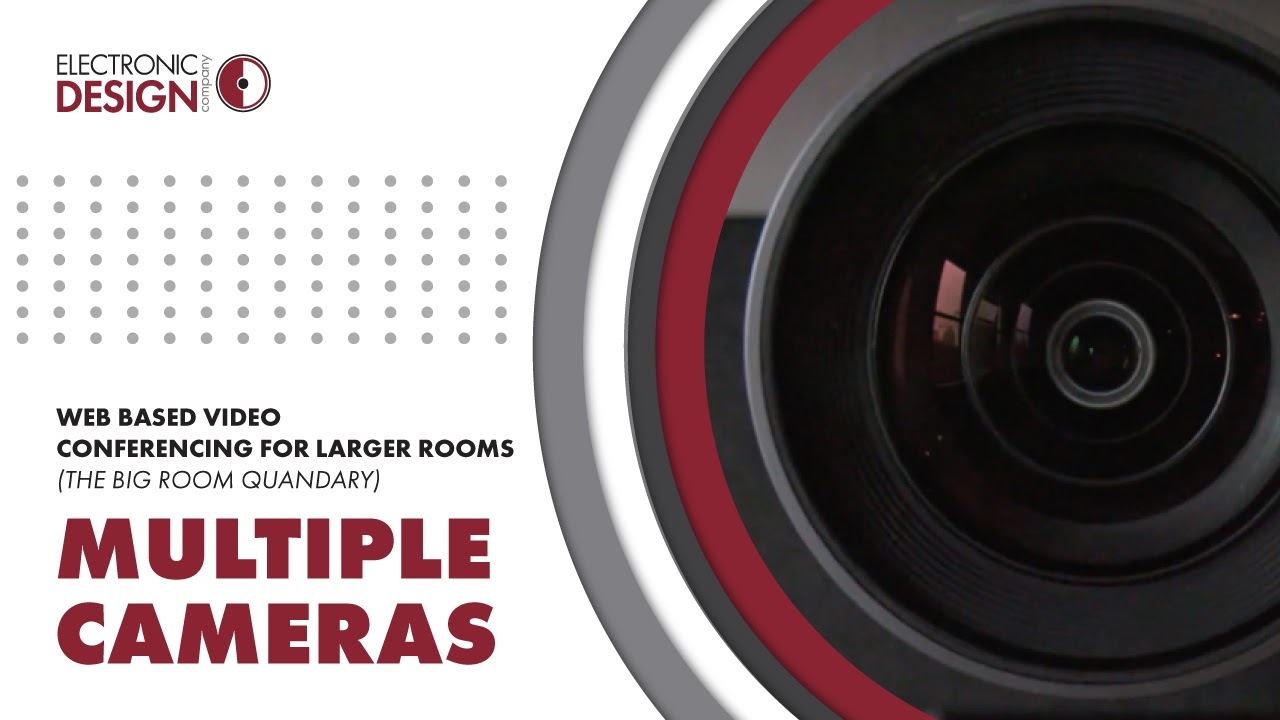
Web Based Video Conferencing for Larger Rooms (The Big Room Quandary): Multiple Cameras
September 15, 2021Over the last year most of us have become quite accustomed to attending online meetings with video. Usually these have involved multiple attendees signing in on their devices and using the device’s built-in camera. This type of video conferencing system requires virtually no control of the camera by the user. Many of us have also attended other streaming events where there were multiple cameras in operation, such as church services or large conferences. The systems that handle this type of video control and switching are vastly more complicated than what we have experienced on our home systems in many ways.
Somewhere between these two extremes lies the typical conference room need for a simple to use system that includes more than one camera. The difficulty in adding a secondary camera to a lot of the pre-packaged, single camera solutions on the market is not readily apparent to most users, but it is important to understand how the desire to just “add a second camera” can cause system complexity (and costs) to rise dramatically.
Adding videoconferencing to a conference room can greatly enhance the rooms functionality and assist in staying connected with workers who may be working remotely. For smaller rooms, a single pan-tilt-zoom camera can usually meet the needs of the user. These cameras typically connect to a small hub which converts the video and control signals for connection to the user’s computer (or sometimes a dedicated computer is integrated into the room). Connection from this hub, or AV Bridge, generally uses a USB connection that can be problematic due to cabling length limitations. Provided that the AV Bridge is within a short cable run’s distance from the computer, the user typically just selects that USB input device as the camera and audio source from their conferencing software.
Adding a second camera to this setup can greatly complicate things for the end user if not thought through carefully. The addition of that second camera suddenly eliminates the straight-forward connection of one camera to one computer. Somewhere in this expanded system there must be a method of switching between cameras, recalling unique presets and providing manual control of the individual cameras as well. This immediately complicates things for the end-user and the system setup.
Well thought through multiple camera systems for videoconferencing will be designed from the beginning as having more than one camera to deal with (rather than using them as an ‘add-on’). A control panel will usually suffice to allow the user to select and control cameras and recall presets. A video switch (or increasingly a network switch) is introduced to switch the selected video source into the AV Bridge.
The result of increasing system complexity is the need for either skilled human operators who can adapt the system for each conference need or smarter hardware that automates parts of the job allowing a single user to do most of the work. There are situations where one of these options is preferred over the other and there is a limit to what automation can do to help make complex video production a one-person job, however, the average sized videoconference for streaming is easily handled by a single operator with the assistance of some clever hardware.
NEXT INSTALLMENT: AEC


